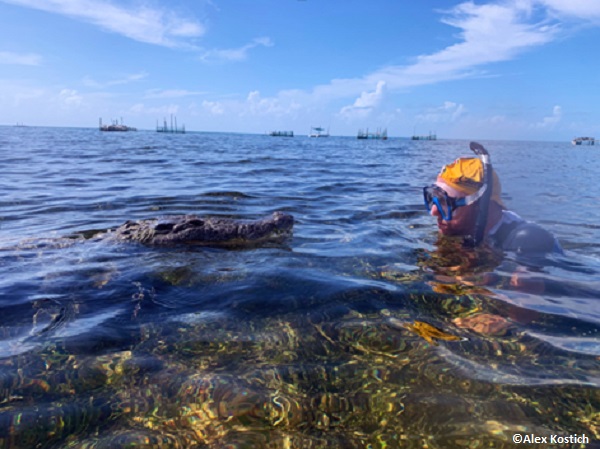It has happened again: On April 29th, the 30-year-old bodyboarder Adrien Dubosc was killed in a shark attack off the Island of Réunion in the Indian Ocean. The bite occurred at 11:45 a.m. on a crowded beach on the west of the island at Pointe au Sal in Saint-Leu.
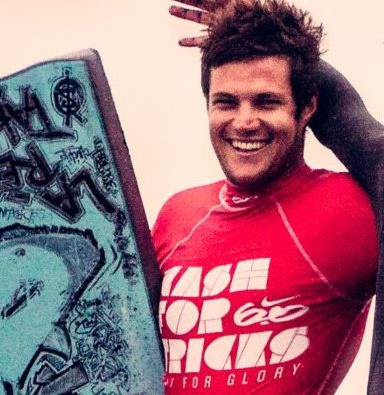
Apparently, some family members watched the drama unfold. Dubosc went with two friends to the beach. Surfing and bodyboarding are banned in the area because of numerous shark attacks. As well as being an experienced bodyboarder, Adrien Dubosc was part of an organization called ‘Shark Watch Patrol’ that is dedicated to cutting down the numbers of increasingly frequent shark attacks on Réunion.
“The young man was in the water with two friends when a shark attacked him, biting his right thigh, and his groin area,” said local authorities. “The victim was pulled out of the water, and emergency workers arrived very quickly. Despite cardiac massage, he died within half an hour of the attack.”
Why was an experienced surfer taking such a risk? Especially tragic: Just two months before, on February 21, a good friend of his – Alexandre Naussac – was also killed by a shark.
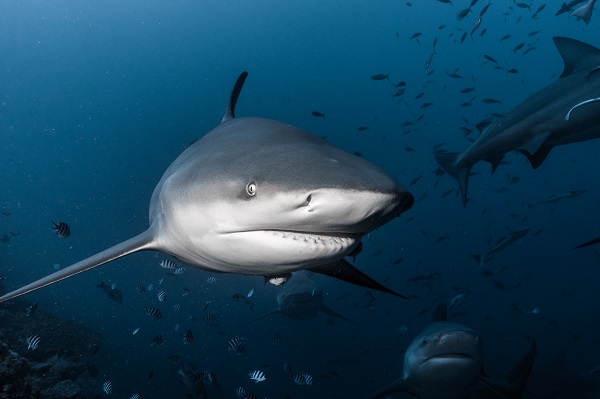
The 26-year-old was bodyboarding at Saint-Andre on the northeast coast of the island when he was attacked by the animal, probably a bull shark.
Since 2011, a series of attacks have taken place on the coast of La Réunion. In 21 attacks, nine were fatal! Between 2000 and 2010 there were only three such incidents. So what has changed in the past six years?
To find out, I call my friend Benoît Raoul. We met in 2013 when diving with white sharks in Guadalupe, Mexico. The 38-year-old is a diver, photographer, surfer and above all – he lives in Saint-Leu on Reunion!
“It looks like paradise on land, but under water it’s like Jurassic Park,” he tells me. “There were a variety of measures to protect maritime life, including a ban on commercial shark fishing, which was implemented in 1999 (due to potential ciguatera contamination), a shark finning ban introduced in 2004 and finally the creation of a marine protected area in 2007.”
The problems seem to have started with the introduction of the protection zone on the west coast. It covers 35 km². On March 7, the Region announced the withdrawal of the 230,000 Euros of aid allocated to the Marine Reserve to finance tools to manage the shark crisis: shark watch, Cap Sharks, maintenance and maintenance of bathing sites. A sustainable solution?”
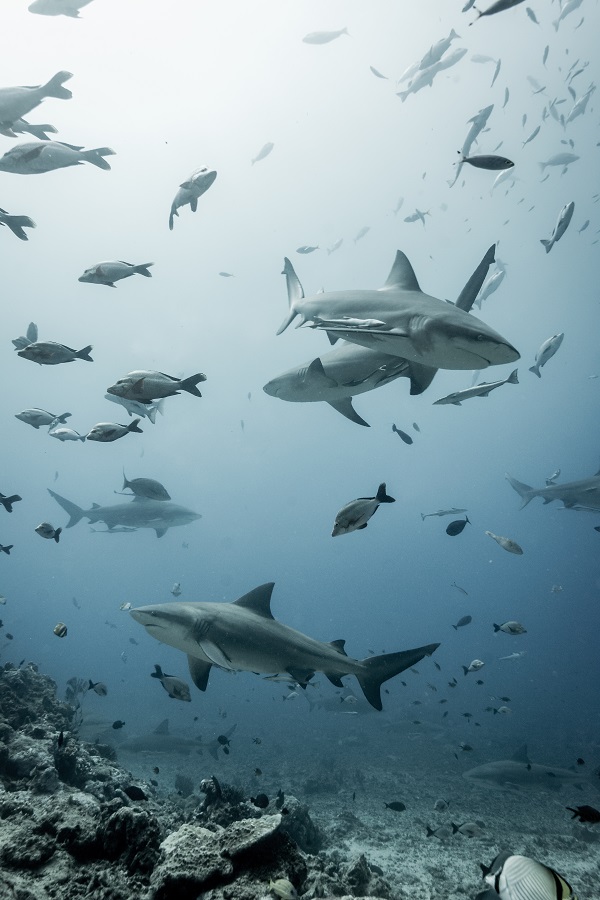
Is this the end of the Réserve Nationale Marine de La Réunion? Outside of this area, the ocean is already like an underwater desert. The protection zone was built in 2007, but the numerous shark attacks did not begin until 2011. Perhaps the small population of dangerous bull sharks needed four years to recover? Perhaps the reef fish also needed this time to multiply, which in turn attracted the big sharks, since they have now found more prey?
No matter what it is, the coast of Réunion, in particular the beaches around Boucan Canot, come closest to what the media refers to as shark infested waters.
Why have the sharks suddenly shown an increased interest in humans – most of the laymen have an answer to this. The top three explanations are:
1. The established marine nature reserve has the effect of an all-you-can-eat buffet for sharks.
2. The fish farms north of Saint-Gilles stimulate the animals by the sound of the fish bred in large catch basins near the coast (this was already closed at the end of 2012).
3. The classic: fishing boats lead the sharks directly to the harbor, as they throw their fish waste into the water.
None of these theories has been confirmed so far. What they all prove is one thing: Réunion knows nothing about its sharks. Although the number of attacks since 2011 has indeed reached an unknown dimension, the only real understanding is that tiger and bull sharks live in the waters of Réunion which is nothing new and is hardly surprising.
“In 2013, 90 sharks were culled by the government, including 45 bull sharks and 45 tiger sharks. In addition, they imposed a ban on all water sports on most beaches. Neither the one nor the other action had any impact on shark attacks and also because the surfers do not stick to the ban.
“You have to understand, surfing is not just a sport for us, it is a lifestyle” explains Benoît.
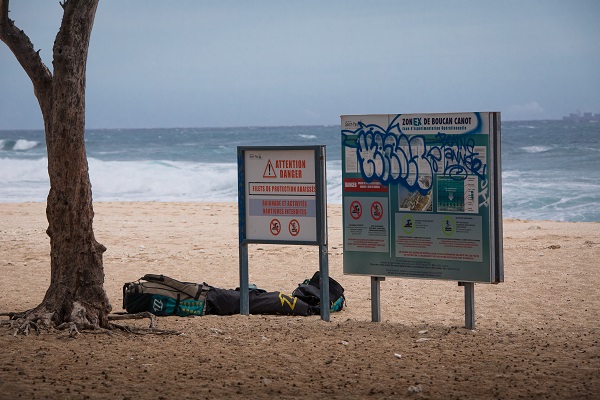
In the French press the headlines were popping up: New shark attack on La Réunion, The mystery of the increasing shark attacks or bloodthirsty killer shark in peaceful island paradise.
Since the word “shark crisis” seems to be connected with La Réunion, the economy suffers. In the past, 450,000 tourists came every year, now only 300,000. The diving and surfing industries are virtually dead. In other European newspapers the events were hardly noticed, but in the local newspapers of Réunion they led to an almost hysterical reporting.
Inexact facts and contradictory information didn’t help solve the problem. Instead, they led to even more confusion. For example, it has been mentioned that the statistical risk of a shark attack would be at 8.28 per million inhabitants, while Science and wildlife journalist Sarah Keartes states there is a 0.000008 percent chance.
After the death of Alexandre Naussac in February, even US Surfing legend Kelly Slater has made a call for killing the sharks. “Honestly, I won’t be popular for saying this but there needs to be a serious cull on Reunion and it should happen everyday [sic]. There is a clear imbalance happening in the ocean there.” wrote the eleven-time world champion, who is usually known for his commitment to the protection of the world’s oceans. A heated discussion followed.
While many Internet users shared Slater’s view, there was also a strong opposition. “This is a tragedy, but slaughter is not an answer,” wrote a female user. Others pointed out that the killed bodyboarder was surfing in an area which was closed because of the risk of shark attacks. So, was it his fault? In the meantime Slater rowed back with his testimony, since he even received death threats.
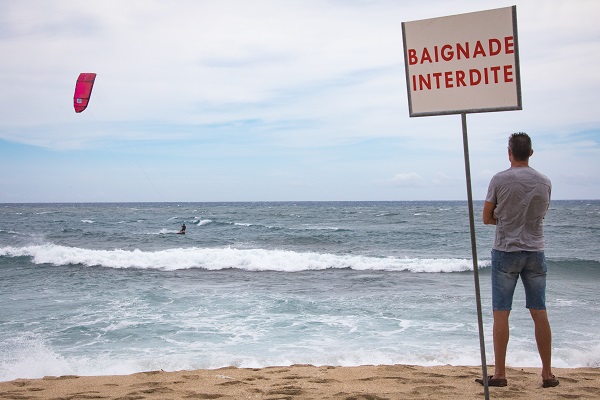
The professional surfer Jeremy Flores criticized the behavior of the Réunion government: “We all know where the problem is: in 2007 a marine protected area was built on the west coast. Before that, we had a good balance in our ecosystem. Sharks and humans got along very well. A protected area is a great idea, but it was the wrong place for it! It was also sloppily managed. In this area, the sharks could proliferate.”
“Why was this protected area not built in the south or east of the island, where there are no beaches, but just in front of the most popular beaches on the west coast? As if that were not bad enough, a fish farm was built on the coast. I’m not a scientist, but something tells me that was not very smart. Now we have a real ‘shark park’ on the west coast – where have the reef sharks been? They have disappeared or been eaten by a shark which has been seen only sporadically before our shores – the bull shark!”
Other people say the reason why bull sharks (a non-native species) have moved into Reunion’s waters is because the reef sharks that competed with them for food were killed by local fishermen. In 2011, when the French government hired a team of freedivers to investigate the situation, the team found that a large number of sharks were circling garbage on the seafloor near marinas and harbours where food, garbage and fish guts were thrown overboard from boats.
If someone is killed by a shark, this is a very difficult situation for family and friends, more than any other death related accident. The reason for this is that one of the most primitive fears of man awakens: to be devoured by a wild beast. For many hundred years, we have no longer been threatened by predators in the countryside; we are no longer in touch with them in our daily lives. When we go into the sea, it is different. That is why we react with disproportionate violence and incomprehension against the threat – in this case the sharks.
This concludes Investigation: Man vs shark La Réunion shark attacks part 1.
Check back tomorrow for part 2.
Christian Kemper is a TV journalist from Germany. He has been diving with and studying sharks for more than 20 years. He has written two books about shark attacks and one book about crocodiles. He is a freelance writer for three of the largest diving magazines in Germany.
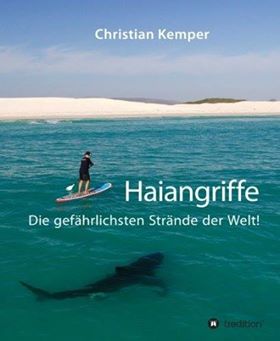
You can find his German language book Strange Pool Friends on Amazon and at https://tredition.de/.

